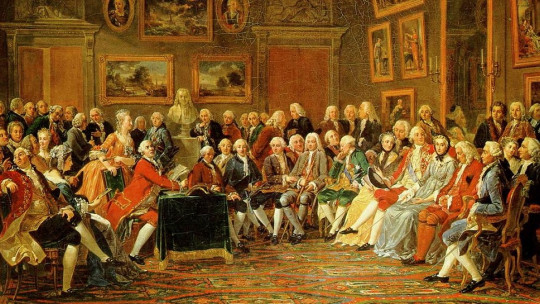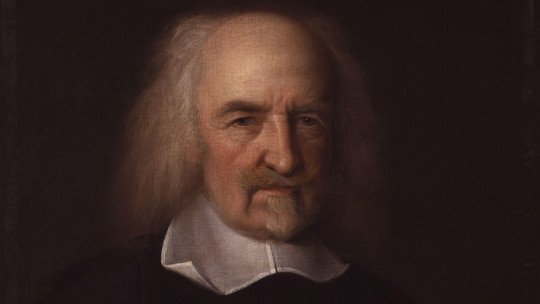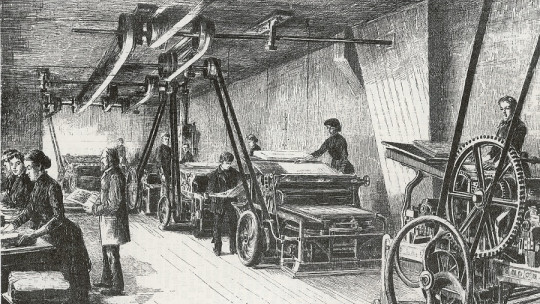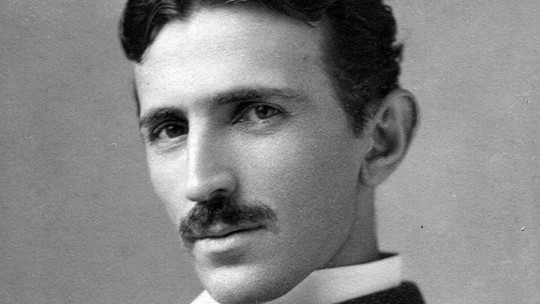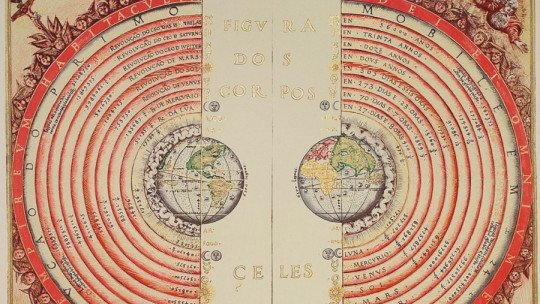A great milestone in History was the Scientific Revolution a movement and a historical period, beginning at the end of the 17th century in Europe, through which science emerges and great advances are made in this field (also on a social level), during the early modern age.
What new ideas emerged in this movement and what others were banished? What characteristics did it have? What are the figures that stood out during this time? What was the role of women? We will answer these and other questions in this article.
Scientific Revolution: what was it?
The Scientific Revolution was a historical era and movement in which The scientific knowledge of the time was challenged and even replaced by new ideas These ideas corresponded above all to the field of chemistry, physics, medicine, biology and astronomy.
At that time, religious, mystical and superstitious ideas predominated, through which the responsibilities and consequences of events were attributed to superior and supernatural beings.
With the Scientific Revolution, this changed, and explanations of natural phenomena began to be made referring to reason and empirical knowledge Thanks to this movement, modern sciences advanced, which also represented a great change at a social level. The fact of going from carrying out research based on ideas linked to theology (passed through the filter of philosophers such as Aristotle or Saint Thomas Aquinas) to others in which observed facts and testable hypotheses were based marked a before and a turning point. after.
Regarding its temporality, the Scientific Revolution began at the end of the 17th century (end of the Renaissance) and extended until the 18th century (beginning of the Enlightenment). Specifically, Its beginnings date back to the year 1543
Where did it start? It is generally stated that in Europe, although little by little it became a global revolution.
Characteristics and term “revolution”
As a curious fact, the term “Revolution” to refer to this historical period was coined, in 1939, by the French historian and philosopher Alexandre Koyré.
Through this term (which generated a lot of controversy), the historian wanted to highlight the paradigm shift that occurred in the world, in relation to how reality was analyzed and observed until now ; It was a break with everything before, a new beginning that involved science and knowledge but also society.
Thus, this term also referred to this historical period as a period full of transformations in the main academic and scientific institutions. With the Scientific Revolution, a new scientific community emerged, which sought find the truth (and analyze it) through reason, study of knowledge and verification.
Banished ideas
But what concepts or ideas did the Scientific Revolution leave behind?
This movement covered many fields of knowledge, as we have said, and its effects were truly extensive. One of the ideas that the Scientific Revolution overthrew has to do with the idea that the Earth was the center of the Universe (Aristotelian concept).
Another idea that the Scientific Revolution overthrew was the belief that matter was a continuous element; at that moment, matter and reality began to be structured from a mathematical perspective through the ideas of Plato and Pythagoras, among others.
On the other hand, the idea that the task of philosophy should be to make explanations of reality compatible, on the one hand, with the idea of the existence of God, was also rejected. This allowed science as we know it to develop, drawing on the efforts of a philosophy largely emancipated from religion.
New ideas
The new ideas that came through the Scientific Revolution were multiple, although here we have collected some of the most relevant. These ideas allude to how reality was understood at that time.
1. Composition of the bodies
With the Scientific Revolution, comes the idea that bodies are not composed of elements such as water, fire, earth or air, but by atoms and molecules
2. The light
It is determined that light is a beam in which colors coexist, which are absorbed or refracted by different objects, which is what allows us to distinguish and appreciate them.
3. Natural selection
Living beings result from natural selection an evolutionary process proposed by Charles Darwin, and which maintains that the environmental conditions are those that favor or hinder (select) the reproduction of organisms, according to their particularities and characteristics.
Initiators of the Scientific Revolution
We found great figures who contributed their grain of sand to make the Scientific Revolution possible , both men and women, although the latter were never given the importance they deserved and that they really had, because they always went “unnoticed” or were simply silenced. Later, in this article, we will address this topic in summary.
Here we rescue the names of four relevant authors who were widely known for their contributions, which paved the way towards the Scientific Revolution.
1. Galileo Galilei
In the field of astronomy, we must highlight the figure of the Italian astronomer, philosopher, engineer, mathematician and physicist Galileo Galilei, author of the first law of motion for astronomical observation
2. Nicholas Copernicus
Nicholas Copernicus was a Renaissance astronomer monk, author of the heliocentric theory of the Solar System, according to which the Earth and the planets revolve around the Sun.
This theory was very prominent in the Scientific Revolution, since opposed the prevailing theory until now, the geocentric theory according to which the Earth was the center of the universe.
3. Johannes Kepler
Johannes Kepler, another astronomer, this time of German origin, who was also a mathematician. His contribution was to enumerate the laws on the movement of the planets in their orbit around the Sun.
4. Isaac Newton
The well-known Isaac Newton, English physicist and mathematician (among other professions), formulated the law of gravitation, as well as others, related to reality , which modified the understanding they had until then of mathematics and physics. His findings in this field still shape the way we understand and explain reality today, and the laws he developed have not been replaced by other scientific constructs.
Gender and Scientific Revolution
Londa Schiebinger, a prominent professor of History of Science at Stanford University, has dedicated herself to researching the topic of gender and the scientific revolution.
One of his observations was the fact that in the midst of the upheaval in medical circles at the time, one of the central and highly controversial topics they dealt with was that of feminine nature. Schiebinger also denounces that the old stereotypes of the time about women influenced the promoters of the revolution
Along these lines, the researcher highlights the view of the uterus as something “cursed” and the cause of multiple diseases, by philosophers of classical Greece (such as Plato or Democritus). This and other discussions about female sexual organs, which we find at the origin of modern science, placed women in a clearly inferior (or secondary) position with respect to men.
Other experts on the subject, such as Pilar Castrillo, professor of Philosophy at UNED, denounces the fact that, During the Scientific Revolution, there was no revolution for women and its role within science was always relegated to the background.
So, although the Scientific Revolution was a historical period of great advances for science, there were facets or aspects, such as the role of women, that were forgotten without being able to advance.


